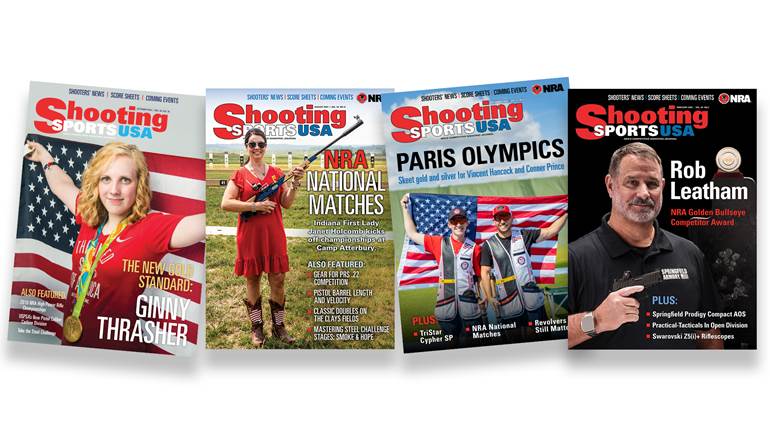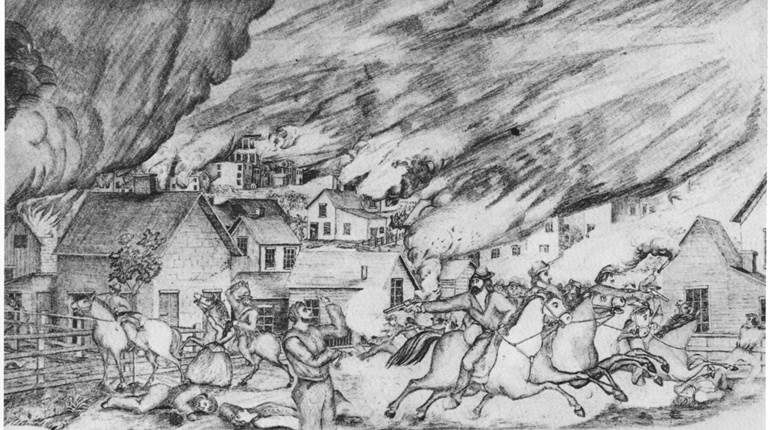
Navy Arms' Parker-Hale Whitworth and the Parker-Hale Volunteer, to be specific, are back, in both hexagonal and round bores with American walnut stocks and bone-charcoal color-casehardened hammers and lockplates. In Manchester, England, Sir Joseph Whitworth produced the most accurate rifles in the world during the 1860s—rifles used to great effect by Confederate sharpshooters during the Civil War. For more on Whitworths, read Martin Pegler's article "Sharpshooting of the North & South: The Genesis of Sniping," and go to americanriflleman.org/whitworthrifle. More important than just the Whitworths, Navy Arms itself is back in the replica firearm business.

Navy Arms is a company that has had its ups and downs. Sixty years ago, Valmore Forgett, Jr., started his first company after leaving the U.S. Army, selling dewats (deactivated war trophies) under the Ma Hunter name, followed up by Service Armament Co. and then Navy Arms in 1957. Forgett dabbled and dealt in everything from Thompsons to Civil War cannons to surplus firearms and accoutrements from all over the world. He eventually came to be the “father of replica firearms” from first the Civil War and then the Old West and the American Revolution, and all time periods in between. Val Forgett, Jr., was a collector, and when the price of a minty original got high enough, he’d bring out a replica. The guns came initially from Belgium, but the vast majority came from Italian companies such as Aldo Uberti, David Pedersoli and Pietta. Forgett’s first replica of a Colt 1851 Navy was followed by literally hundreds of other replicas, from the LeMat to the Henry to the Schofield to the Brown Bess. But Navy Arms has struggled since the death of its founder in 2002. Not only was there a nasty family squabble over the business, but the business itself changed. Demand for replica firearms was receding, and one of the company’s largest vendors, Aldo Uberti, after its founder’s passing, became part of the Beretta family of companies. The guns were being brought in by subsidiary Stoeger under the A. Uberti name, and Beretta even offered a Single Action Army clone, the Stampede. It’s hard to compete against your best vendor.
 Val Forgett, III, who has dug the family business out of its hole, branched out under the Gibbs Rifle Co. name, offering .45-70 Gov’t Quest and Summits built on Lee-Enfield actions, some 1903A3s, and now offers what could be the sturdiest AK magazine I’ve ever seen (and that’s saying something) from a partner in the former Yugoslavia. He even acquired the unusual and oddball cartridge company Old Western Scrounger. It was enough to keep the payroll going and the electricity on, but Forgett really wanted to get back in the replica gun business. And not just any replicas, but guns with upgraded aesthetics, better finishes and those little touches that make the guns better suited for serious shooters and competitors. The first success was a deal inked with Winchester to offer Model 1873s, and not just any 1873s, but upgraded guns with short-stroke kits, fancy walnut, genuine Marble’s sights and real bone charcoal color-casehardening by Doug Turnbull. Those guns went over so well, Navy Arms is offering Winchester Model 1892 rifles with Grade I walnut stocks in .45 Colt or in .44 Mag. Too, the Navy Arms Lightning pump-action is being built by Pedersoli to Navy’s specifications with real bone-charcoal color-casehardening in .45 Colt or .357 Mag., and the Smith Carbine breechloader is upgraded with Grade I walnut stocks and American-made barrels. As a sign of the turnaround, next year, in partnership with the Buffalo Bill Center of the West, Navy Arms will produce 200 hand-engraved Exhibition Models and 1,000 Presentation Grade Winchester Centennial Model 1873s.
Val Forgett, III, who has dug the family business out of its hole, branched out under the Gibbs Rifle Co. name, offering .45-70 Gov’t Quest and Summits built on Lee-Enfield actions, some 1903A3s, and now offers what could be the sturdiest AK magazine I’ve ever seen (and that’s saying something) from a partner in the former Yugoslavia. He even acquired the unusual and oddball cartridge company Old Western Scrounger. It was enough to keep the payroll going and the electricity on, but Forgett really wanted to get back in the replica gun business. And not just any replicas, but guns with upgraded aesthetics, better finishes and those little touches that make the guns better suited for serious shooters and competitors. The first success was a deal inked with Winchester to offer Model 1873s, and not just any 1873s, but upgraded guns with short-stroke kits, fancy walnut, genuine Marble’s sights and real bone charcoal color-casehardening by Doug Turnbull. Those guns went over so well, Navy Arms is offering Winchester Model 1892 rifles with Grade I walnut stocks in .45 Colt or in .44 Mag. Too, the Navy Arms Lightning pump-action is being built by Pedersoli to Navy’s specifications with real bone-charcoal color-casehardening in .45 Colt or .357 Mag., and the Smith Carbine breechloader is upgraded with Grade I walnut stocks and American-made barrels. As a sign of the turnaround, next year, in partnership with the Buffalo Bill Center of the West, Navy Arms will produce 200 hand-engraved Exhibition Models and 1,000 Presentation Grade Winchester Centennial Model 1873s.
For more information, contact: Navy Arms, 54 DuPont Road, Martinsburg, WV 25404; (304) 274-0004; navyarms.com.




































